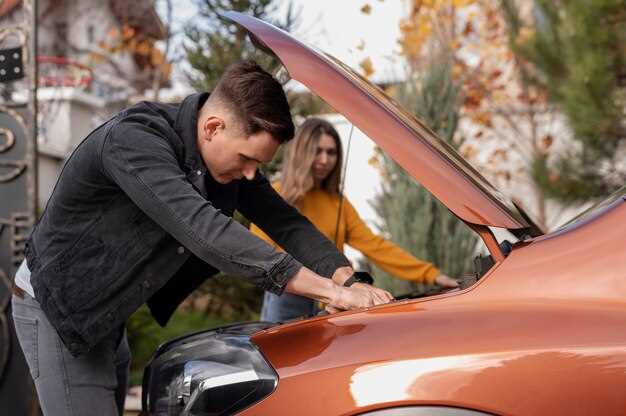
Purchasing a salvage car can be a remarkable opportunity for savvy car buyers looking to save money. These vehicles, often marked as “total losses” by insurance companies, may still be highly repairable and present a chance to own a decent car at a fraction of the market price. However, the journey of buying a salvage car is not without its challenges, making it crucial to weigh both the positives and negatives before making a decision.
One of the primary advantages of purchasing a salvage car is the significant cost savings. Buyers can find vehicles that are usable or easily repairable at a much lower cost compared to their clean title counterparts. This can be particularly attractive for those who possess the skills and resources necessary to carry out the repairs themselves. Additionally, a salvage car can serve as a valuable project for automotive enthusiasts who enjoy restoring vehicles to their former glory.
On the other hand, the disadvantages of buying a salvage car can be substantial. The main concern revolves around the uncertainty regarding the extent of the damage and the quality of repairs done, if any. Even if a salvage car appears repairable, hidden mechanical issues may arise, leading to costly repairs down the line. Furthermore, securing financing and insurance for a salvage vehicle can be more complicated than for a traditionally titled car, sometimes limiting buyers’ options significantly.
Cost Savings: Evaluating the Financial Benefits of Salvage Cars
One of the most appealing aspects of purchasing a salvage car is the potential for significant cost savings. These vehicles are often priced substantially lower than their market-value counterparts, making them an attractive option for budget-conscious buyers. By opting for a salvage car, consumers can acquire a vehicle that, once repaired, may offer a reliable mode of transportation at a fraction of the original cost.
Salvage cars typically require various levels of repairs to return to a roadworthy condition. Depending on the extent of the damage, some may only need minor fixes, while others might be in need of more extensive work. This brings an opportunity for buyers with mechanical skills or those willing to invest in repairs to save even more. For many, the process of making a salvage car repairable can be a rewarding project, combining personal satisfaction with financial gain.
Moreover, insurance premiums for salvage cars are often lower compared to regular vehicles. Since these cars are usually classified as “total losses” by insurers, their overall value tends to decrease significantly. Consequently, owners can benefit from reduced premiums, further enhancing the financial advantages of this investment. Understanding the insurance implications can lead to additional savings over the life of the vehicle.
Additionally, there is potential for increased resale value after repairs are made. If the salvaged vehicle is restored to good working order, it can be sold for a profit significantly higher than the initial purchase and repair costs. Buyers who invest wisely can turn a salvage car into a valuable asset, showcasing the financial benefits of choosing this route.
However, it’s essential to perform thorough research and evaluations before committing to a salvage car. Assessing the repairability and obtaining a detailed inspection can ensure that the potential savings do not come at the expense of unforeseen expenses. With appropriate diligence, the financial advantages of salvage car purchases can outweigh the risks, making them a viable option for many consumers.
Repair Challenges: What to Consider Before Fixing a Salvage Vehicle

When contemplating the purchase of a salvage car, it is essential to assess the repair challenges that may arise. Salvage vehicles are often considered repairable, but the extent of damage can vary significantly. Understanding these factors can save both time and money in the long run.
First, evaluate the vehicle’s damage history. Salvage cars can have issues ranging from minor cosmetic damages to severe mechanical failures. A thorough inspection by a qualified mechanic can help determine which parts are repairable and which may require costly replacements. Recognizing the limits of repairability will impact your budget and timeline for restoration.
Another critical aspect is the availability of replacement parts. Some salvage vehicles may require specific parts that are difficult to find or no longer in production. Delays in sourcing these components can hinder the repair process, resulting in extended downtime and increased labor costs. Researching the car’s make and model for parts availability is crucial before proceeding with repairs.
The complexity of the required repairs must also be a consideration. Simple fixes like replacing a fender may seem manageable, but more complicated issues such as frame damage or electrical system malfunctions can demand specialized expertise. Assess your own mechanical skills and whether you will need professional help, which can dramatically increase repair costs.
Lastly, consider the potential long-term implications of fixing a salvage vehicle. Even once repairs are completed, issues may arise due to the car’s history. Ensuring that the repairs are executed correctly is vital to avoid future problems that could affect the vehicle’s safety and reliability. Thorough documentation of the repair process and parts used will aid in future resale efforts and provide peace of mind.
Insurance Implications: Understanding Coverage for Salvage Cars

Purchasing a salvage car can be an appealing option due to lower costs, but it also brings specific insurance considerations that buyers must understand. Here’s an overview of the key implications.
- Coverage Challenges: Traditional car insurance policies may not cover salvage vehicles fully. Insurers often classify salvage cars as high-risk due to their history of significant damage.
- Liability Coverage: Basic liability insurance is usually available for salvage cars. However, it’s essential to check local regulations, as some areas have restrictions on insuring these vehicles.
- Comprehensive and Collision Coverage: Many insurers may decline comprehensive or collision coverage for salvage cars. This limitation means that in the event of an accident or theft, the owner might not receive compensation to repair or replace the vehicle.
- Higher Premiums: Insuring a salvage vehicle may result in higher premiums compared to non-salvage vehicles. Insurers price risk, and the potential for higher claims can lead to increased costs.
- State Regulations: Different states have various regulations regarding the insurance of salvage cars. Some may require specific inspections or documentation, influencing coverage options and costs.
- Rebuilt Titles: A salvaged car that has been repaired can receive a rebuilt title, which may improve insurability. However, not all companies will offer standard coverage even for rebuilt vehicles.
- Documentation: Providing thorough documentation about the repairs and history of the salvage car can help in securing better insurance options. Keep records of all work done to the vehicle.
In summary, while salvage cars can be affordable alternatives, they come with significant insurance implications. Buyers should thoroughly research their options and consider consulting with insurance agents to ensure they understand the coverage available for their salvage vehicles.



